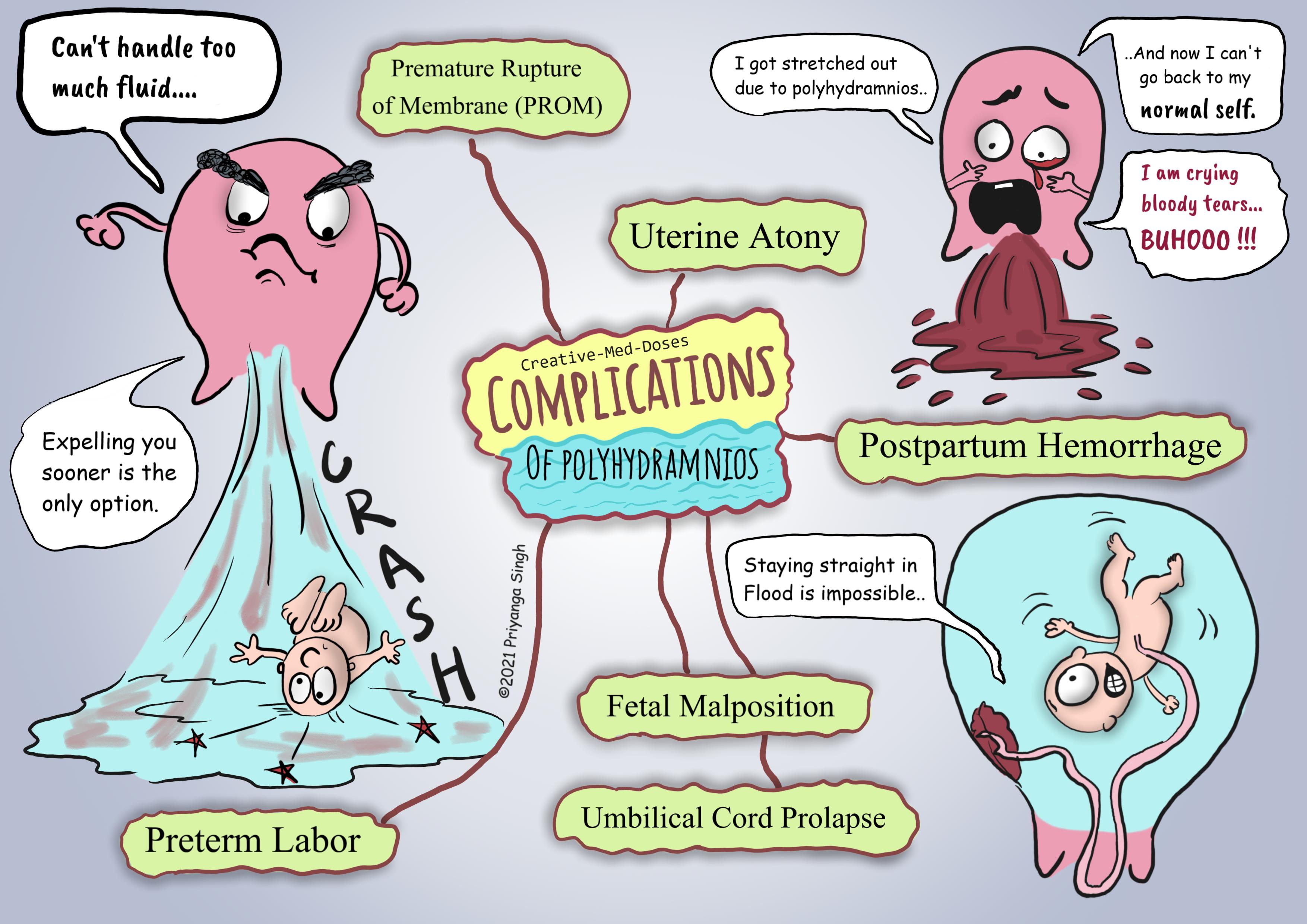Polyhydramnios: Excessive Amniotic Fluid
Polyhydramnios is a condition where amniotic fluid exceeds 1.5-2 liters in volume, and an amniotic fluid index (AFI) is greater than 20-25.
Etiology
Excess in amniotic fluid can be due to
Decreased resorption (decreased fetal swallowing) -
The gastrointestinal obstruction associated abnormalities like intestinal atresia, tracheoesophageal fistula, or anencephaly cause reduced swallowing of amniotic fluid by the fetus. It leads to excessive amniotic fluid in the uterine cavity.
Increased production (excess fetal urination)- Fetal polyuria, as in maternal diabetes, leads to increased amniotic fluid.
Symptoms
Polyhydramnios is often asymptomatic.
Severe cases have difficulty breathing or painful preterm contractions.
The uterus is larger than expected for dates.
Complications
Risks tend to be proportional to the degree of fluid accumulation.
- Preterm contractions and possibly preterm labor
- Premature rupture of membranes, sometimes followed by abruptio placentae
- Fetal malposition
- Maternal respiratory compromise
- Umbilical cord prolapse
- Uterine atony
- Postpartum hemorrhage
- Fetal death
...

polyhydramnios complications
...
Diagnosis
Polyhydramnios is suspected when uterine size is larger than expected for dates.
The amniotic fluid is quantitatively measured, using the amniotic fluid index (AFI) in all suspected cases.
The AFI is the sum of the vertical depth of fluid measured in each quadrant of the uterus. The normal AFI ranges from > 5 to < 24 cm; values ≥ 24 cm indicate polyhydramnios.
Treatment
- Prostaglandin inhibitors – Indomethacin (it reduces the amniotic fluid formation)
- Transabdominal amniocentesis- reducing amniotic fluid volume (amnioreduction/ amniocentesis).
There is no evidence that this approach improves outcomes.
Treat and control the Disorders that could be contributing to polyhydramnios (like maternal diabetes).
...

...
Case Scenario
A 35-year-old female presents at 25 weeks gestation for her prenatal care appointment. Physical exam demonstrates a uterine size larger than expected for her gestational age. The abdominal skin is taut and shiny and shows scattered striae.
Ultrasound examination of the fetus reveals 3 liters of amniotic fluid with an amniotic fluid index of 34. Which of the following fetal abnormalities or dysfunctions is most likely associated with these abnormal ultrasound findings?
- Pulmonary hypoplasia
- Duodenal atresia
- Solitary kidney
- Polycystic kidney disease
Revision for today Renal Tubular Acidosis: types and pathology - Creative Med Doses
Buy fun review books here (these are kindle eBooks you can download kindle on any digital device and log in with Amazon accounts to read them). Have fun and please leave a review.